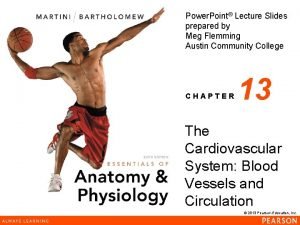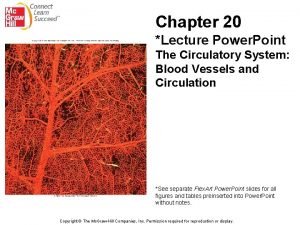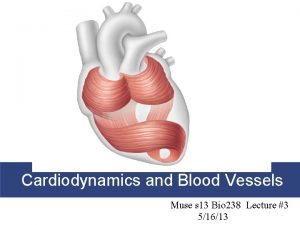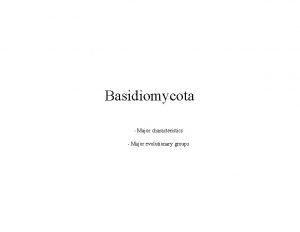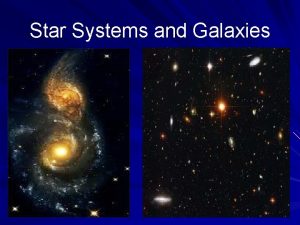STAR Overview of major STAR pA and AA














- Slides: 14

ó STAR Overview of major STAR p+A and A+A physics goals as they impact the TPC James Dunlop Brookhaven National Laboratory October 7, 2006 Dunlop TPC Review, 10/6/2006 1

ó STAR in the RHIC II Era • Rare probes from high luminosity – g-hadron coincidences for jet emission tomography – Charm and beauty: partonic collectivity and lessstrongly interacting “grey” tomographic probes – Charm- and Bottom-onium dissociation – Correlations across full range in h, especially for the FMS; bulk of these studies can be done with EMC’s • Bulk studies of the medium – Particle-identified multiparticle correlations at intermediate p. T: coalescence, “Mach cones”, etc. – Particle-identified flow Dunlop TPC Review, 10/6/2006 2

ó STAR How high in p. T? STAR Preliminary With 10 ub-1 equivalent, factor 3000 expected at RHIC II (but g s down from 10 to 15 Ge. V/c) • • • Current: statistically limited to ~12 Ge. V/c No trigger: with DAQ 1000 might get to 15 Ge. V/c in untriggered probes g-hadron coincidences: expecting g up to 15 Ge. V/c BEMC electrons for B: hadron contamination limits electron identification to ~10 -15 Ge. V/c, depending on performance of the preshower Target: good reconstruction for p. T up to ~ 15 Ge. V/c Dunlop TPC Review, 10/6/2006 3

ó STAR Momentum Resolution: Sagitta • Sagitta Formula: 1. 9 e-4 * L 2/p. T (for full field) • Implication: ~½ cm sagitta at 12 Ge. V (primaries) – twice as small for globals (without inner tracking) due to L 2 Dunlop TPC Review, 10/6/2006 4

ó STAR • • • Momentum Resolution: Embedding (no distortion) ~ primaries 0. 5%/Ge. V from position resolution Implies ~300 um resolution on sagitta (12*0. 005*0. 5 cm = 0. 03 cm) Global resolution is improvable with addition of microvertex detectors for V 0 decays; however, efficiency of adding points at low radius low for longlived hyperons like L Dunlop TPC Review, 10/6/2006 5

ó STAR Positive vs. Negative: momentum shifts Distortions in sagitta lead to opposite-signed shifts in p. T for positives vs. negatives • Combined with steeply falling spectrum, changes positive/negative ratio • Rough size: 0. 1%/Ge. V shift (50 um) leads to ~20% drop at 10 Ge. V – Depends on how steeply falling the spectrum is; this is for pions, larger for protons • • Current limiting systematic on e. g. pbar/p: ~20% at 7 Ge. V/c Somewhat alleviated by summing positives and negatives, but limits physics reach to charge-independent observables Dunlop TPC Review, 10/6/2006 6

ó STAR Momentum resolution: resonances • Limiting resolution on resonance widths is dp. T • Maximize significance, reduce effect of background by minimizing width – E. g. f desire to keep width < 10 Me. V, requires 2% dp. T/p. T • For small S/B, significance of signal essentially scales with resolution: 2 x worse resolution, significance down by factor sqrt(2) Dunlop TPC Review, 10/6/2006 7

ó STAR Side note on Upsilon RHIC CDF resolution m+m 0. 85% @ 4. 9 Ge. V Muons STAR resolution e+e 3% @ 4. 9 Ge. V+ Brem, • Preferable to separate Upsilonium states: sequential dissociation • Current limitation is Bremsstrahlung in inner material • Even without Brem (muons? ), really hard: – 0. 5%/Ge. V implies ~200 Me. V resolution on the peak – 2 S-1 S = 560 Me. V, 3 S-2 S= 330 Me. V; somewhat marginal Dunlop TPC Review, 10/6/2006 8

ó STAR Momentum resolution: corrections to spectra Half field: ~10% dpt/pt for primaries at 5. 5 Ge. V, – Correction factor for bin smearing ~25%, limiting systematic – Depends on steepness of spectrum, somewhat less at higher p. T • Requirement: better than ~10%; at 15 Ge. V, full field, requires ~400 um resolution on primary sagitta (~sqrt(2) increase relative to undistorted case) Dunlop TPC Review, 10/6/2006 9

ó STAR d. E/dx resolution: hadrons p p • Purity of pion selection depends on d. E/dx window – E. g. 4. 5 Ge. V/c, d. E/dx resolution 8%, 80% efficiency at 10% contamination • Contamination already an issue in protons (~10 -20% systematic); worsening d. E/dx resolution will rapidly make this worse Dunlop TPC Review, 10/6/2006 10

ó STAR d. E/dx resolution: electrons BEMC • Major contamination rejector is the TPC d. E/dx • EMC: Currently ~20+/-5% at 8 Ge. V with 50% efficiency; limiting factor (no preshower as of yet) • Worsening of d. E/dx resolution will rapidly make this worse Dunlop TPC Review, 10/6/2006 11

ó STAR Pointing resolution into inner tracking • TPC is only necessary as a pointing apparatus into the SSD or other inner tracking detector • Figure of merit is occupancy in the radius of confusion; not currently considered to be a limiting requirement (e. g. 1 mm fine) • Would like to minimize issue of systematic offsets to avoid calibration delays Dunlop TPC Review, 10/6/2006 12

ó Pileup STAR • Pileup levels (+/- 40 us = 80 us): – Current (Cu+Cu): 40 k. Hz * 80 us =~ 3 extra events – Expected RHIC 2 (Au+Au): 90 k. Hz * 80 us =~6 extra events • Already using existing detectors to reject pileup: EMC’s and CTB – CTB does not work in a heavy-ion environment: occupancy too high – BEMC solves the problem in Cu+Cu for ~70% most central, could probably be extended down to lower multiplicities with some work – EMC occupancy an issue in central Au+Au: loss of rejection power • TOF with low occupancy (10% in central collisions) and tight timing cuts will solve this • p+p – Some current issues with minbias collisions due to low multiplicity, could be solved with work and full coverage of the BEMC – At RHIC 2: 10 MHz * 80 us =~ 800 extra events • TPC Occupancy slightly higher than central Au+Au event; 2*Npart/2 = 700 – Multiple collisions per bunch; timing of TOF will be critical? Dunlop TPC Review, 10/6/2006 13

ó STAR Conclusions Requirement: pt resolution not worsen by more than sqrt(2), and preferably do better – In heavy ion physics, p. T ~ 15 Ge. V/c is likely the highest p. T of interest in the foreseeable future: sqrt(2) would give you dpt/pt ~10%, at which point smearing corrections will start to be significant – Statistics-starved resonance studies (D, f) lose significance as sqrt(resolution); Upsilon in the muon channel would benefit from any improvement (only ~2 s or so at best) and would be badly impacted by any worsening of the resolution – Inner tracking probably does not buy much, due to L 2; may, however, take some of the onus off the most-distorted inner points in determining the sagitta Requirement: d. E/dx resolution not worsen from current (~8%) Limiting factor in e-h and p-p separation Pileup likely solved by the TOF in ions; p+p has different issues Pointing resolution to SSD/IST likely not a large issue Systematic distortions may continue to be a time-limiter in calibrations Dunlop TPC Review, 10/6/2006 14
 Star of wonder star of night star of royal beauty bright
Star of wonder star of night star of royal beauty bright Pulmonary circulation
Pulmonary circulation Blood supply of stomach flowchart
Blood supply of stomach flowchart Arteries of abdomen
Arteries of abdomen Overview of the major systemic arteries
Overview of the major systemic arteries Ao* algorithm in artificial intelligence
Ao* algorithm in artificial intelligence What does star in star events stand for
What does star in star events stand for Overview of transcription and translation
Overview of transcription and translation Data cleaning problems and current approaches
Data cleaning problems and current approaches Chapter 17 elements and their properties
Chapter 17 elements and their properties Chicago time
Chicago time Multicullar
Multicullar An overview of data warehousing and olap technology
An overview of data warehousing and olap technology Data quality and data cleaning an overview
Data quality and data cleaning an overview Data quality and data cleaning an overview
Data quality and data cleaning an overview


